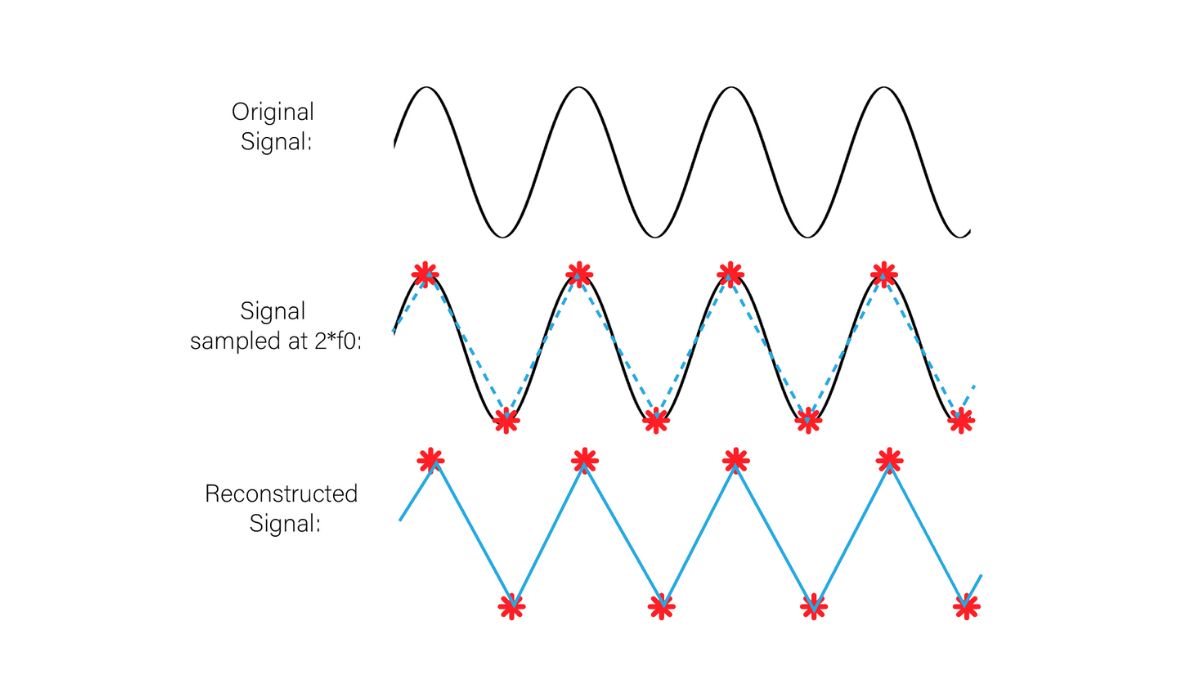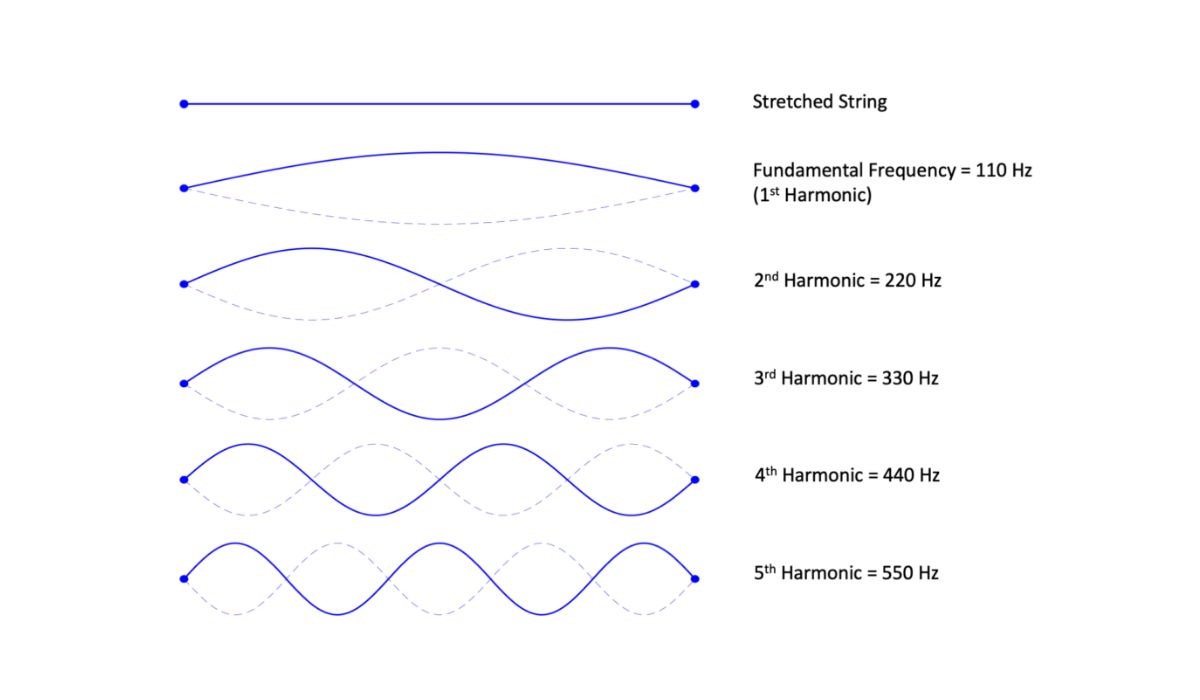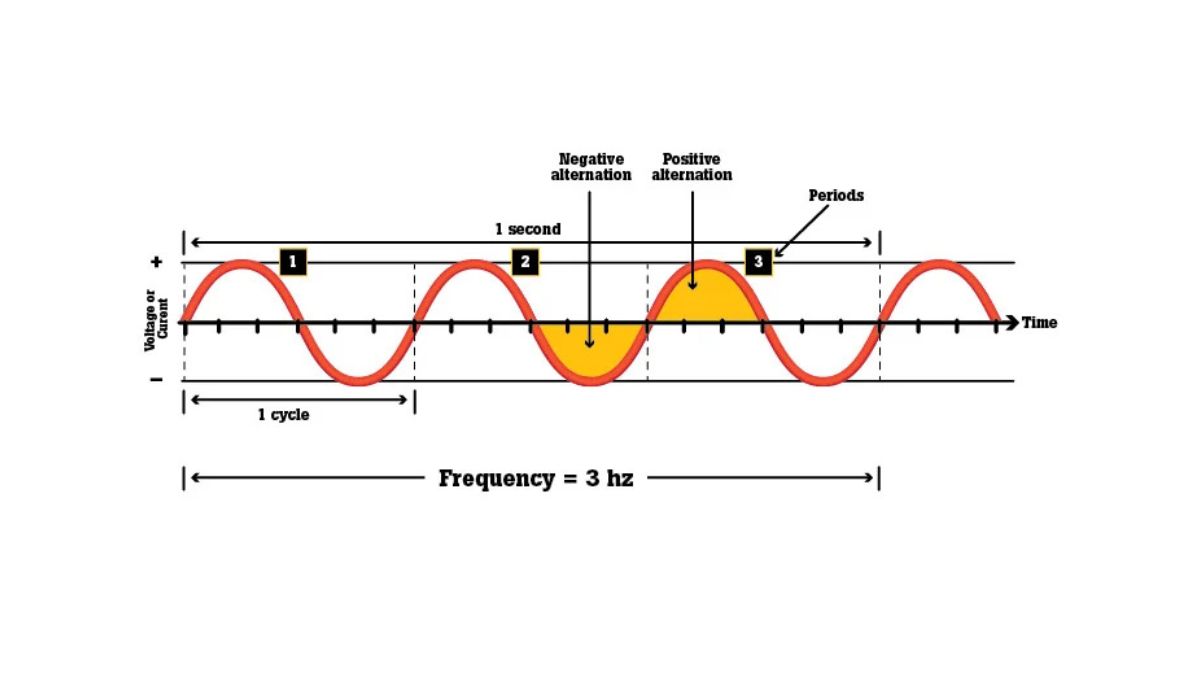Home>Events & Info>Frequency>What Is High-Frequency Sound


Frequency
What Is High-Frequency Sound
Published: February 18, 2024
Discover the significance and properties of high-frequency sound waves. Learn about the uses and effects of frequency in various applications. Explore the science behind frequency and its impact on our daily lives.
(Many of the links in this article redirect to a specific reviewed product. Your purchase of these products through affiliate links helps to generate commission for AudioLover.com, at no extra cost. Learn more)
Table of Contents
Introduction
Introduction
High-frequency sound is a fascinating and essential aspect of our auditory experience. From the sweet chirping of birds to the soothing rustle of leaves in the wind, high-frequency sound waves surround us, enriching our lives in ways we may not always consciously recognize. In this article, we will delve into the captivating world of high-frequency sound, exploring its definition, characteristics, applications, and importance in various fields.
The realm of sound is a diverse and complex landscape, encompassing a wide spectrum of frequencies. High-frequency sound, in particular, refers to sound waves with frequencies higher than the audible range for the average human ear, typically above 20,000 hertz. While these frequencies may not be directly perceptible to us, their impact is profound and far-reaching, extending into fields such as technology, medicine, and communication.
As we embark on this exploration, we will unravel the unique qualities of high-frequency sound, shedding light on its significance and the myriad ways it influences our daily lives. Whether it's the ultrasonic waves used in medical imaging or the precision of high-frequency communication signals, the world of high-frequency sound is a captivating realm that intertwines with our existence in remarkable ways. Join us as we unravel the mysteries and marvels of high-frequency sound, gaining a deeper understanding of its profound impact on the world around us.
Definition of High-Frequency Sound
Definition of High-Frequency Sound
High-frequency sound, also known as ultrasound, refers to sound waves with frequencies higher than the upper limit of the human auditory system, which is typically recognized as 20,000 hertz. While humans can perceive sound within a limited frequency range, high-frequency sound extends beyond this threshold, making it inaudible to the human ear. This range of sound waves holds immense significance in various scientific, industrial, and medical applications, harnessing frequencies that are often beyond our natural sensory perception.
From a technical standpoint, high-frequency sound waves are characterized by their rapid oscillations, creating a wave pattern that exhibits a high number of cycles per second. This rapid oscillation distinguishes high-frequency sound from lower frequency ranges and contributes to its unique properties and applications.
One of the defining features of high-frequency sound is its use in medical imaging, where ultrasound technology plays a pivotal role in diagnostic procedures. By emitting and capturing high-frequency sound waves, medical professionals can visualize internal structures of the body with remarkable precision, enabling non-invasive examinations and facilitating accurate diagnoses. Beyond the realm of medicine, high-frequency sound finds applications in diverse fields such as industrial testing, cleaning processes, and even pest control, where ultrasonic frequencies are utilized to repel unwanted insects and rodents.
Furthermore, high-frequency sound is integral to the functionality of various electronic devices and communication systems. From the transmission of data through high-frequency radio waves to the precision of ultrasonic sensors in automotive technology, the impact of high-frequency sound resonates across a wide array of modern innovations.
While high-frequency sound may remain imperceptible to our ears, its influence permeates numerous facets of our lives, contributing to advancements in healthcare, technology, and beyond. By understanding the definition and characteristics of high-frequency sound, we gain insight into its profound implications and the boundless possibilities it presents in diverse fields.
Characteristics of High-Frequency Sound
Characteristics of High-Frequency Sound
High-frequency sound exhibits a distinct set of characteristics that differentiate it from lower frequency ranges and underpin its diverse applications in various domains. Understanding these unique traits is essential for comprehending the profound impact and versatility of high-frequency sound waves.
- Rapid Oscillation: One of the primary characteristics of high-frequency sound is its rapid oscillation, denoting the high number of cycles per second within its wave pattern. This rapid oscillation enables high-frequency sound waves to propagate with exceptional speed and precision, contributing to their efficacy in applications such as medical imaging and industrial testing.
- Inaudibility to Humans: High-frequency sound waves exist beyond the upper limit of the human auditory system, rendering them inaudible to the average human ear. While we may not directly perceive these frequencies, their utilization in various technologies and scientific endeavors underscores their significance and impact.
- Precision and Resolution: The high frequency of sound waves equips them with remarkable precision and resolution, making them invaluable in tasks that require detailed imaging and accurate measurements. This characteristic is particularly evident in the field of medical ultrasound, where high-frequency sound enables the visualization of intricate anatomical structures with exceptional clarity.
- Penetrative Properties: High-frequency sound waves possess the ability to penetrate solid materials with varying degrees of attenuation, depending on the frequency and the properties of the material. This penetrative capability is harnessed in non-destructive testing methods across industries, allowing for thorough inspections of internal structures without causing damage.
- Technological Integration: The characteristics of high-frequency sound waves have facilitated their seamless integration into a wide array of technological innovations, ranging from ultrasonic sensors in automobiles to the transmission of data through high-frequency radio waves. This integration underscores the adaptability and utility of high-frequency sound in driving advancements across diverse sectors.
These characteristics collectively underscore the multifaceted nature of high-frequency sound, illuminating its role as a catalyst for innovation and progress in fields as varied as healthcare, engineering, and communications. By recognizing and harnessing these distinctive traits, researchers and innovators continue to unlock new possibilities and applications for high-frequency sound, further expanding its impact on our interconnected world.
Applications of High-Frequency Sound
Applications of High-Frequency Sound
The versatile nature of high-frequency sound waves has paved the way for a diverse array of applications across numerous industries, harnessing the unique properties of ultrasound to drive innovation and progress. From healthcare to manufacturing, high-frequency sound plays a pivotal role in an extensive range of cutting-edge technologies and scientific endeavors.
- Medical Imaging: One of the most prominent applications of high-frequency sound is in the realm of medical imaging, where ultrasound technology enables non-invasive visualization of internal organs and tissues. From obstetric sonography to cardiac echocardiography, ultrasound imaging techniques leverage the precision and penetrative capabilities of high-frequency sound waves to facilitate diagnostic examinations and guide medical interventions.
- Industrial Testing and Inspection: High-frequency sound finds widespread use in industrial testing and inspection processes, particularly in non-destructive testing methods. Ultrasonic testing techniques employ high-frequency sound waves to detect internal flaws, measure material thickness, and assess structural integrity across diverse materials and components, ensuring the safety and reliability of critical infrastructure.
- Communication and Data Transmission: High-frequency sound waves serve as the backbone of various communication systems, facilitating the transmission of data through radio waves and enabling wireless connectivity across vast distances. From high-frequency radio communications to the intricate modulation of ultrasonic signals in underwater acoustic networks, the applications of high-frequency sound in communication technologies are integral to modern connectivity.
- Cleaning and Processing Technologies: Ultrasonic cleaning processes harness the power of high-frequency sound waves to remove contaminants from delicate surfaces, offering a gentle yet effective method for precision cleaning in industries such as electronics manufacturing, jewelry production, and medical device sterilization. Additionally, ultrasonic processing technologies utilize high-frequency sound for tasks such as emulsification, homogenization, and particle size reduction in diverse industrial processes.
- Pest Control and Animal Deterrence: Ultrasonic pest repellents leverage high-frequency sound waves to deter pests and vermin, offering a non-toxic and environmentally friendly approach to pest control. Similarly, ultrasonic animal deterrent devices utilize high-frequency sound to discourage wildlife from entering specific areas, providing a humane and effective means of mitigating human-wildlife conflicts.
These applications merely scratch the surface of the extensive and evolving landscape of high-frequency sound utilization. As technology and scientific research continue to advance, the potential applications of high-frequency sound are poised to expand further, driving innovation and addressing complex challenges across diverse sectors.
Importance of High-Frequency Sound
Importance of High-Frequency Sound
The importance of high-frequency sound extends far beyond its inaudible nature, encompassing a multitude of critical applications and contributions to various fields. From revolutionizing medical diagnostics to enabling advanced communication networks, high-frequency sound waves play a pivotal role in shaping modern technologies and scientific advancements, underscoring their profound significance in our interconnected world.
One of the foremost areas where the importance of high-frequency sound is evident is in the realm of medical diagnostics and imaging. Ultrasound technology, which relies on high-frequency sound waves, offers a non-invasive and versatile method for visualizing internal anatomical structures, aiding in the detection of abnormalities, guiding surgical procedures, and monitoring fetal development during pregnancy. The precision and safety afforded by high-frequency sound-based imaging techniques have transformed medical diagnostics, contributing to improved patient outcomes and healthcare practices.
Furthermore, the integration of high-frequency sound waves into industrial testing and inspection processes has been instrumental in ensuring the integrity and reliability of critical infrastructure. Non-destructive testing methods utilizing ultrasonic technology enable thorough assessments of materials and components, detecting flaws and weaknesses that could compromise safety and performance. This application of high-frequency sound is paramount in industries such as aerospace, manufacturing, and construction, where the accurate evaluation of structural integrity is essential.
Communication and data transmission represent another domain where the importance of high-frequency sound is undeniable. High-frequency radio waves and ultrasonic signals form the backbone of wireless communication networks, enabling global connectivity and the seamless exchange of information across vast distances. The reliability and efficiency of these communication systems, underpinned by high-frequency sound, have catalyzed advancements in telecommunication, navigation, and data transfer, shaping the interconnected fabric of the modern world.
Moreover, the utilization of high-frequency sound waves in cleaning and processing technologies has contributed to sustainable and efficient practices across various industries. Ultrasonic cleaning processes offer a gentle yet powerful method for removing contaminants from delicate surfaces, reducing the need for harsh chemicals and enhancing precision cleaning in manufacturing and healthcare settings. Similarly, ultrasonic processing technologies have revolutionized tasks such as emulsification, dispersing, and deagglomeration, driving advancements in food processing, pharmaceutical manufacturing, and materials science.
As we continue to unravel the importance of high-frequency sound, it becomes evident that its impact transcends individual applications, permeating diverse sectors and fostering innovation. The adaptability, precision, and penetrative capabilities of high-frequency sound waves continue to inspire new discoveries and solutions, underscoring their enduring importance in driving progress and addressing complex challenges in the modern era.
Conclusion
Conclusion
In the symphony of scientific exploration and technological innovation, high-frequency sound waves resonate as a silent yet powerful force, shaping the landscape of modern advancements and applications. From the intricate realms of medical imaging to the intricate web of communication networks, the influence of high-frequency sound extends far beyond its inaudible nature, encompassing a tapestry of critical contributions and transformative capabilities.
As we have journeyed through the definition, characteristics, applications, and importance of high-frequency sound, it becomes evident that its impact reverberates across diverse domains, driving progress and addressing complex challenges. The rapid oscillation, precision, and penetrative properties of high-frequency sound waves underpin their pivotal role in medical diagnostics, industrial testing, communication technologies, and cleaning processes, offering a multifaceted toolkit for innovation and problem-solving.
Moreover, the adaptability and versatility of high-frequency sound waves continue to inspire new frontiers of exploration, fostering interdisciplinary collaborations and sparking novel solutions to pressing societal needs. Whether it’s the delicate precision of ultrasound imaging or the seamless connectivity facilitated by high-frequency communication networks, the enduring importance of high-frequency sound resonates as a testament to its indispensable role in our interconnected world.
As we conclude this exploration, we are reminded of the profound impact of high-frequency sound waves, transcending the boundaries of human perception to enrich our lives and propel us toward a future defined by ingenuity and advancement. The symphony of high-frequency sound, though silent to our ears, echoes with the harmonious cadence of progress, innovation, and the unyielding pursuit of knowledge.
Through continued research, collaboration, and ingenuity, we stand poised to further unravel the mysteries and marvels of high-frequency sound, unlocking new possibilities and applications that will continue to shape our world in profound and unforeseen ways.











